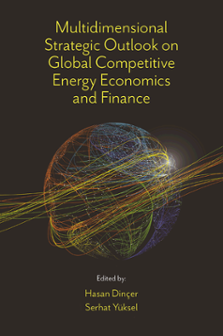
Index
Multidimensional Strategic Outlook on Global Competitive Energy Economics and Finance
ISBN: 978-1-80117-899-0, eISBN: 978-1-80117-898-3
Publication date: 18 February 2022
Citation
(2022), "Index", Dinçer, H. and Yüksel, S. (Ed.) Multidimensional Strategic Outlook on Global Competitive Energy Economics and Finance, Emerald Publishing Limited, Leeds, pp. 179-182. https://doi.org/10.1108/978-1-80117-898-320221020
Publisher
:Emerald Publishing Limited
Copyright © 2022 Hasan Dinçer and Serhat Yüksel. Published under exclusive licence by Emerald Publishing Limited
INDEX
- Prelims
- Chapter 1 Identifying New Perspectives on Geothermal Energy Investments
- Chapter 2 Theoretical Foundations of the Relationship between Energy Investment, Monetary Conditions, Financial Development, and Economic Growth
- Chapter 3 Do Energy Use and Environmental Pollution Cause Income? A Study on the BRICS Nations
- Chapter 4 Relationship between Energy Investment and Economic Growth
- Chapter 5 The Effect of Emotional Intelligence Levels on Leadership: An Application in the Energy Sector
- Chapter 6 Measuring the Nonlinearity of the Relationship between Finance and Energy Investment
- Chapter 7 Method for Assessing the Nature of the Relationship between Energy Investment and Finance with the Criteria of Monetary Factor Thresholds
- Chapter 8 Evaluation of the Hypothesis of Nonlinear Relationship between Finance and Energy Investment
- Chapter 9 The Impacts of Energy Usage and Economic Growth on the Ecological Footprint and CO2 Emissions: The Case of G-7 Countries
- Chapter 10 Assessment of the Nature of the Relationship between Energy Investment and Finance
- Chapter 11 Importance of Renewable Energy Investments for Qualified Workforce
- Chapter 12 Is the Energy-Hungry Bitcoin Beneficial for Portfolio Risk Reduction?
- Chapter 13 Bitcoin Mining with Nuclear Energy
- Index